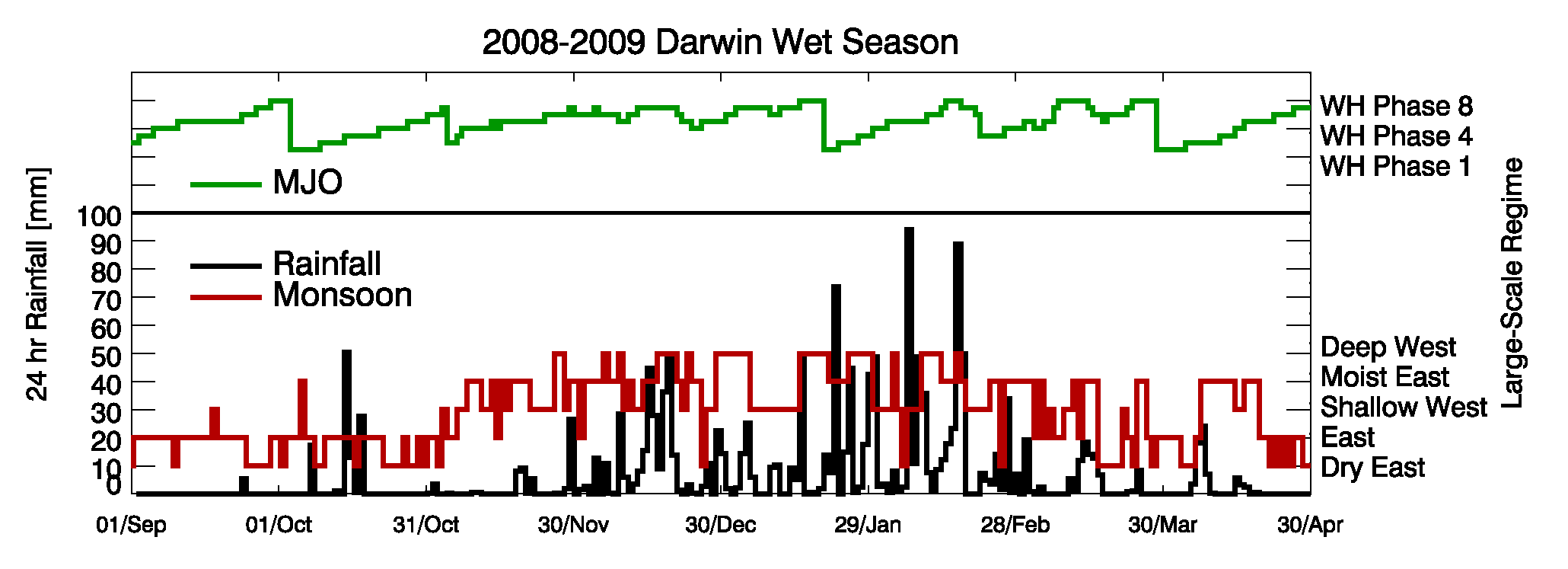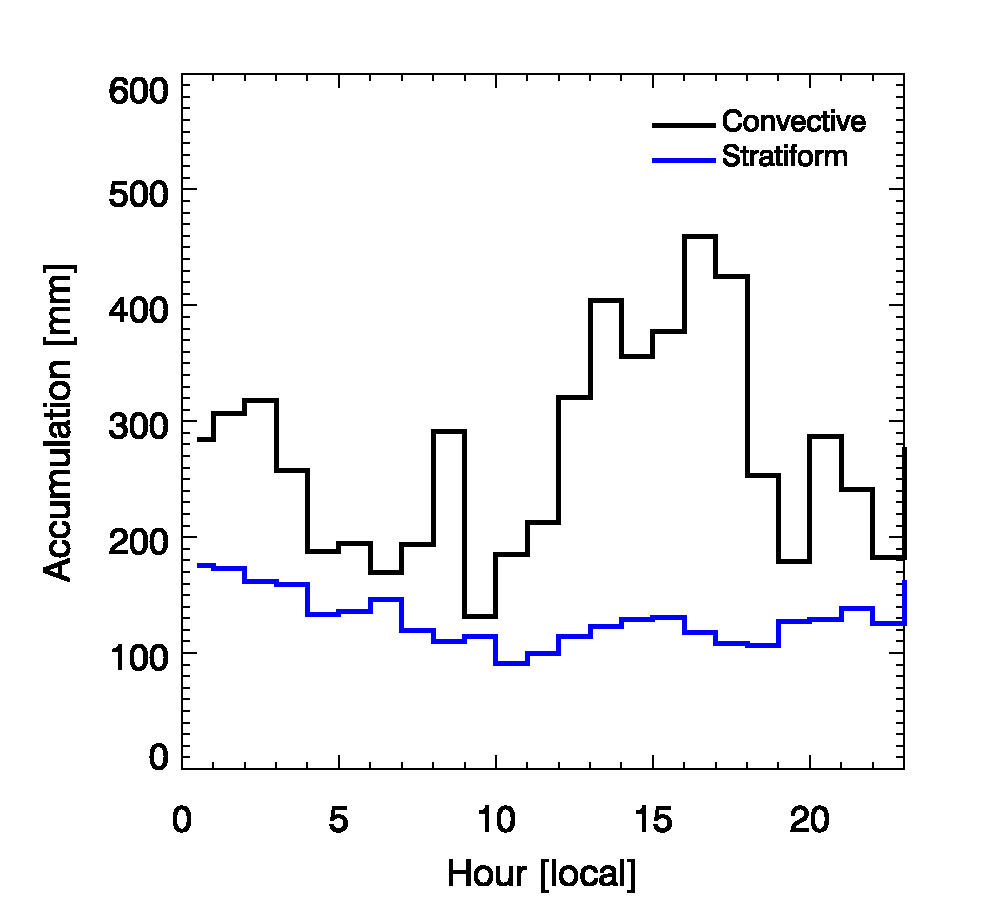A revealing look inside northern Australian wet season precipitation
Submitter:
Giangrande, Scott — Brookhaven National Laboratory
Area of research:
Surface Properties
Journal Reference:
Science
Significant wet season rainfall over Darwin stems from precipitation having distinct forcing and life cycle characteristics, and these behaviors may be reflected in the longer-term observed ARM precipitation records. For example, the deeper convection that propagates over Darwin is often continental in origin, whereas shallow convection is often more maritime. Previous studies note that much of the variability in the northern Australian wet season precipitation can be explained by isolating precipitation events according to their synoptic or larger-scale monsoonal regimes in addition to a more localized storm classification (e.g., stratiform or convective) and/or hourly breakdowns.
Impact
These efforts are continued by exploring variability in rainfall totals, radar-type rainfall rate estimators, and several raindrop size distribution characteristics over a multi-year archive drawn from the ARM Darwin, Australia facility. The primary observations considered in this study are those obtained from an impact disdrometer with an impressive near-continuous record of operation over five consecutive wet seasons (2006-2011). This considerable sampling of events was sufficient to tease out several bulk rainfall properties according to diurnal onset and intensities, convective and stratiform partitioning, and several well-established methods to diagnose northern Australian monsoonal regimes and the phase of the Madden-Julian oscillation (MJO) over Darwin.
Summary
As with previous studies, we observe that the peak in precipitation, as well as larger drop sizes, were associated with ‘Break’ monsoon periods. These ‘Break’ monsoonal periods exhibited a distinct diurnal maximum attributed to afternoon sea-breeze convection over Darwin. Our disdrometer-centered MJO phase breakdowns over Darwin did not illuminate significant diurnal or drop size behaviors, however rainfall accumulations within these ‘Active’ MJO phases were double those from the non-Active phases. Our study additionally highlights observations within a pairing of the ‘Active’ Monsoon with an ‘Active’ MJO phase over Darwin that was associated with the most pronounced 'small drop' drop size distribution behaviors in this extended ARM record.



